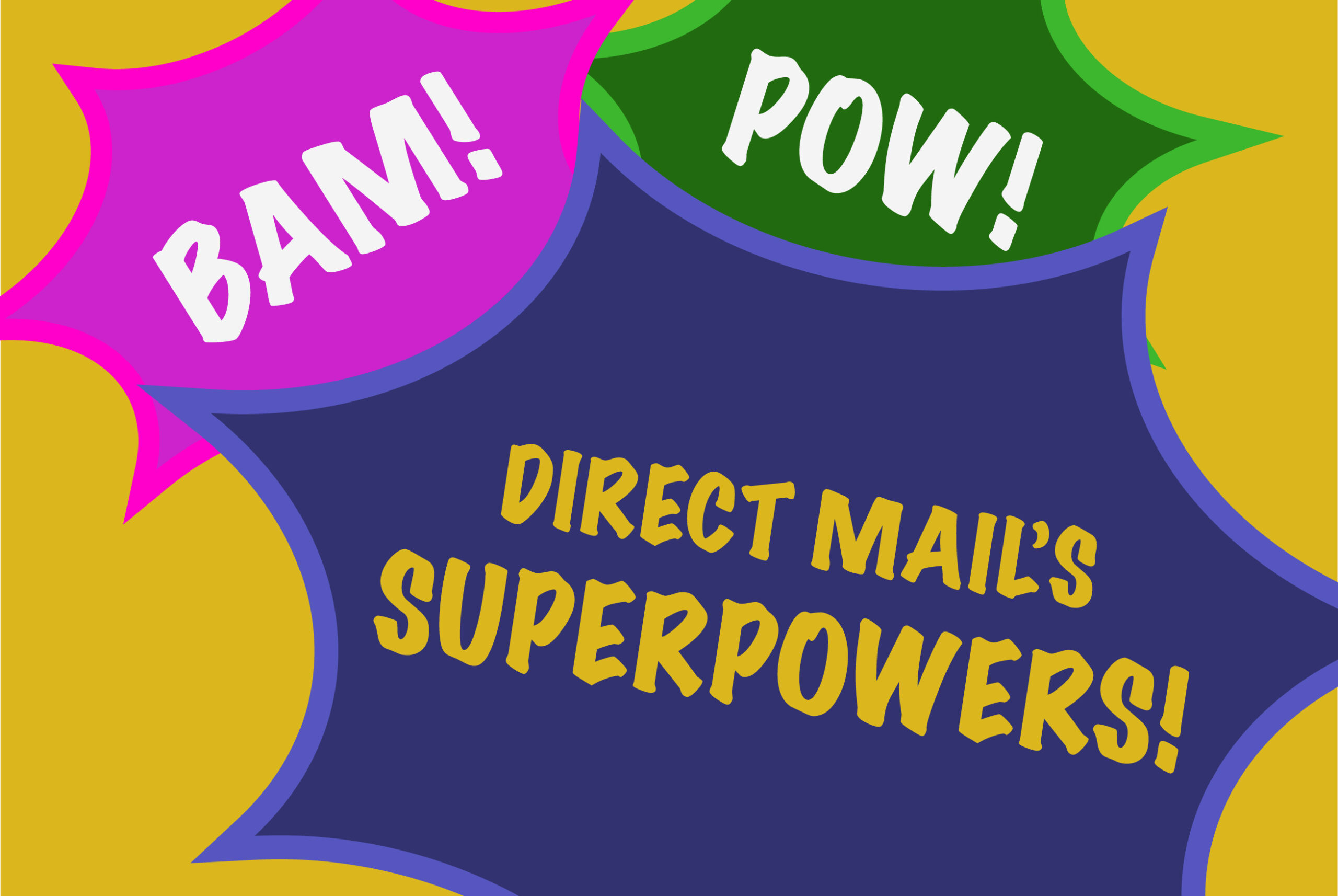ICYMI: Direct Mail’s Superpowers
The deluge of online ads, emails, social posts, streaming ads, TV commercials, and beyond—has swelled significantly since the start of the pandemic, leaving people suffering from more digital marketing fatigue than ever before. A recent survey conducted by direct mail printer SG360 revealed 94 percent of marketers admit their target customers are overwhelmed by the increased use of digital marketing channels in the COVID-19 era. And 75 percent of consumers agreed with them. That makes this the perfect time to revisit the power of direct mail to cut through the clutter. So, we’re reprising a previous post offering a look at the place of creative direct mail in the marketing mix.
Go check your mailbox. No, not your Outlook or Gmail. The one your mail carrier uses. There’s probably something powerful waiting there for you. Maybe it’s a postcard with a 15% off coupon for your favorite taco place or an earnest message from a presidential hopeful. Whatever it is—whether you read it, quickly scan it, or merely give it a glance as you toss it into the recycling bin—it’s likely to leave an impression, consciously or not.
Such is the impact of direct mail. And despite our current obsession with consuming content on a screen, it remains one of the mightiest components of the marketing mix. If you still need to be convinced, there are abundant articles online that prove it’s still a superhero. Just search “direct mail statistics” and you’ll see what we mean.
There is one set of statistics, however, that we like to share. It proves direct mail didn’t stop being a force for good just because digital media started taking over the world. It’s from a recent Association of National Advertisers/Data and Marketing Association report:
| Channel | Response Rate |
|---|---|
| Direct mail | 9.0% |
| 1.0% | |
| Paid search | 1.0% |
| Social media | 1.0% |
| Online display ads | 0.3% |
The fact that direct mail’s response rate is about 3x that of all these digital channels combined is impressive. But statistics don’t tell the whole story about direct mail’s superpowers. We would know—members of the Street Level Studio creative team have spent their careers concepting, designing, writing, and producing direct mail pieces for everything from popular food and beauty products to business conferences and sophisticated software. And this experience has given us not only a front row seat for the evolution of direct mail over the last few decades but also a keen sense of where it’s trending now.
Personalization as a Design Element
Personalization has wielded a lot of muscle in the direct marketing industry for years, but in name only. And we mean that literally. It used to be enough to print someone’s actual name on an envelope or attach a “handwritten” sticky note to a letter with a personal salutation to make them feel important.
But we’re way past that definition of personalization, moving into deep targeting and true customization. Now, with immense data mining and customer behavior tracking capabilities—plus advances in variable data printing technologies—direct mail can make them feel like the sender actually knows them.
One way we’re seeing this play out is using design elements to personalize the content—and the experience—of direct mail beyond just text. Some examples:
- Personalizing images to match demographics, interests, and lifestyle
- Creating custom graphs and charts that speak to individual attitudes and beliefs
- Adding local markers, like a map showing the sender’s business location in relation to the recipient’s address
- Changing color palettes to reflect culture, age, or style preferences
Creating a Touching Experience
Today’s most effective and eye-catching direct mail also takes the concept of “interactivity” to a whole new tactile dimension. It starts with making sure the recipient picks a direct mail piece out of the stack simply because it feels different—adding multiple pieces to increase thickness or using textured paper to create tactile engagement, for example.
There’s been a serious injection of touchy-feely, textured papers in the industry lately, so options for adding a tangible quality are exploding—from linens, leathers, silks, and satins, to pearlescent and soft touch paper stocks. Beyond giving direct mail designs extra dimension and a subtle impression of quality, using creative paper choices also supports the idea of personalization by removing the mass-produced feel.
Printing and finishing techniques that inspire a natural “touch impulse” are also trending. More than adding visual appeal, they actively invite engagement and interaction in a way that’s practically irresistible. Recipients just have to run their fingers across the surface when they see a raised gloss coating, textured spot varnish, reticulated pattern, foil, embossing, or debossing. Some modern presses can even turn out pieces that both look and feel like leather, wood, stitched fabric, or almost any other texture.
Pushing Outside the Envelope
Finally, there’s growing interest in the “disruptive” category—direct mail that breaks out of the norm to break through the clutter. Traditional techniques for grabbing attention, like unusual shapes and sizes, have always been part of the direct mail arsenal. But designs are getting a lot more creative (even if more expensive) as technology and ingenuity enable new possibilities.
Think dimensional pop-ups and intriguing pieces with seemingly “endless” folds. Envision motion-driven mailers, video imbedded in print brochures, and voice-activated calls to action. These and many other direct mail departures venture beyond just a touch-only experience to requiring interaction and manipulation. And, according to findings from the SG360 survey, unifying and integrating print with evolving omnichannel marketing tactics really is the future of direct mail.
No doubt, the world can expect to see even mightier direct mail trends emerge as marketers form stronger and more strategic alliances between this classic marketing superhero and the forces of digital communication. So, don’t underestimate its powers to engage. Harness them creatively. We can help!
